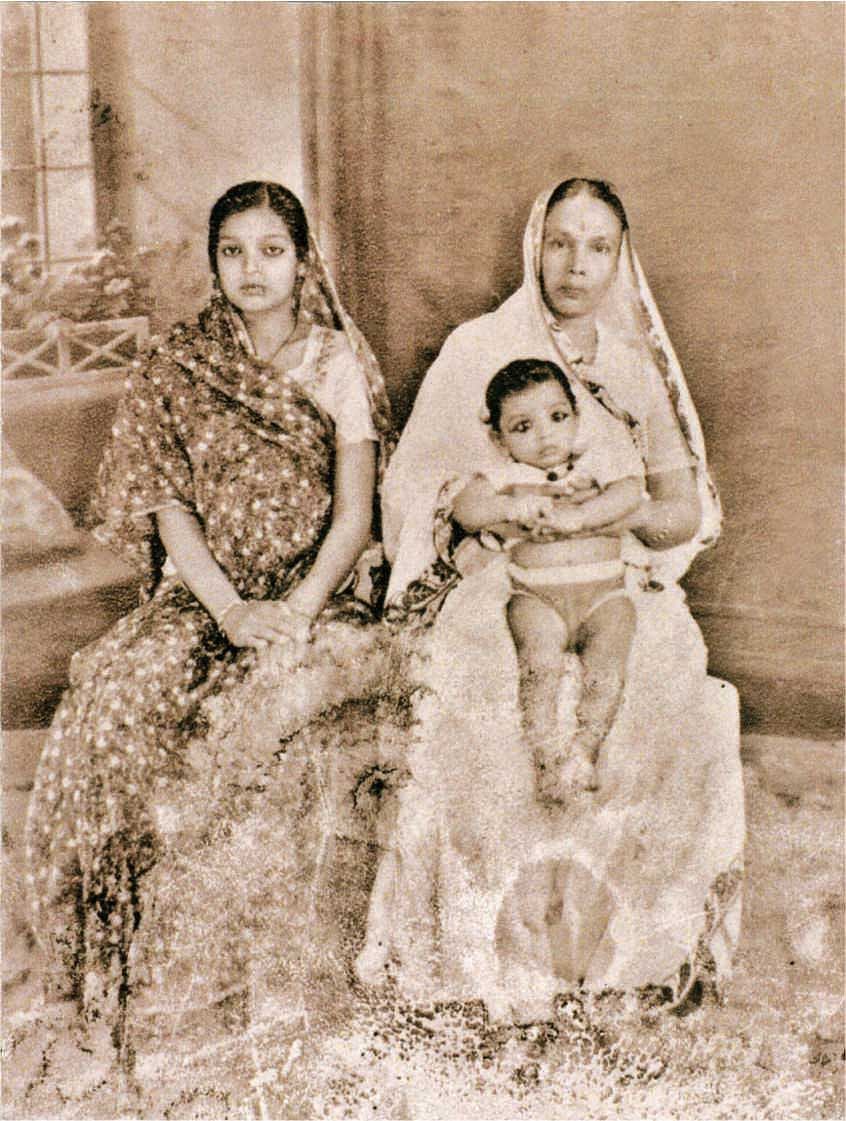Retelling People's History
Retelling People's History
Nepal Picture Library, an online archiving organisation, is trying to bring back the untold history hidden in family albums.

We are about to tell you a story about a photograph which is at least fifty years old. Fungus has caused damage in the lower part of the sepia-tone picture, but the faces are still visible. This is a story of a young woman named Parvati. She was married off to a man much older to her when she was still a child. Her husband was already married to another woman. The couple decided to bring Parvati since they had been unable to have any children. Parvati's niece Sandhya Shah says the first wife of Parvati's husband took on the role of her guide. The couple truly believed that they had been blessed with Parvati. The relationship between the two women almost resembled the bond between a mother and daughter. Parvati says, "I got the love that even my mother couldn't give me from my husband's first wife."
Every morning, Parvati would be woken with a glass of sweetened milk which the first wife brought to her bed. Sandhya elaborated the reason, "This is so that you give birth to strong, healthy children."
You won't find this simple family history in any textbook; maybe some anthropological research could bring you such details but that would be it. An online archival organization called Nepal Picture Library has been working hard to find out these kinds of stories that remain untold and articulated only through old family albums. NayanTara Gurung Kakshyapati, one of the founders of the Nepal Picture Library and Photo Circle, says, “So far we have been able to collect 26 thousand old photographs and put it online and the search for such photos is still on all around Nepal." NayanTara is representing Nepal Picture Library at this year's Chobi Mela.
The story of photography in Nepal is quite interesting. Before 1950, only a few individuals from feudal families had the opportunity to capture intimate moments on camera. However, the situation changed after studio photography was introduced in 1950. It was expensive but people from all walks of life were keen to have at least one photo of their marriage or a special shot with friends or family members. Interestingly, studios became the place where people came with the intention to preserve their youth and moments forever in stills. Thus nearly sixty years later, the photographs of common people have come to represent their actual history.
Photo Circle, a platform for Nepali photographers, took the initiative of setting up an online picture library in 2011. Their primary goal was to compile the collective history hidden within old photo-albums and create an archive that retells the history of Nepali people. NayanTara says, “If you Google Nepal, you will see pictures of mountains and temples, which is a very limited representation of the country. Our economy is driven by tourism, so this representation seems quite natural. Everything is designed to attract the West to come and spend money and that's how the economy runs. So people all around the world have very limited idea of what Nepali people look like or how they are in their real life. Interestingly, the mechanism also holds true for the Nepali people.”
Nepal has a very particular type of documented history, as the country has been ruled by monarchy for hundreds of years. Only the lives of the ruling class were mainly documented. The online archive is trying to be more inclusive. And thus their project started with a slogan “History Begins at Home," emphasizing on the personal being a part of something bigger, says NayanTara. "Archiving personal narratives can turn into a larger national narrative. And our small team is working hard to retell this narrative."
The project started with the family albums of the organisation's members and has expanded to include other members of the society. Collecting pictures was a difficult job in the first few years but now they arrange small exhibitions when they travel to a new place. NayanTara says, “Sometimes we only exhibit digital projections. Sometimes we hang small prints on the wall. Whenever people pass by such exhibitions or learn about them, they are drawn to them and they approach us for more information."
She believes that it doesn't make sense to have only an image bank. An individual image has thousands of stories to tell as she adds, “You need to know about the images. What these images portray and represent and the story behind each image.” They are currently trying to include researchers on their team, because they believe that a good researcher will be able to work on this huge resource and help them with the history behind the images.
NayanTara says, “We will try to exhibit our archives around the world and of course invite researchers to work on them so that we can develop a better understanding of our common history."
At present Photo Circle organises small workshops as they are trying to create a platform to showcase the works of Nepali photographers to the rest of the world. They dream of becoming a photography school like Pathshala as NayanTara adds, “Pathshala is a real inspiration for us.”
Physical forms of archiving, such as physical libraries, are on the brink of extinction, believes Independent Library Report for England. Simply put, like many other physical forms of media, such as newspapers and books, in the Western world these forms are losing the battle of trying to woo spectators and readers. The democratization of the Internet could play a crucial role behind this collapse. However NayanTara believes that in the developing world, funding such huge projects is the actual issue. Thus, her organisation is trying to create its own market both nationally and internationally. "I believe that our library will be able to generate an income source that will enable it to be self-sufficient in the future," she says.